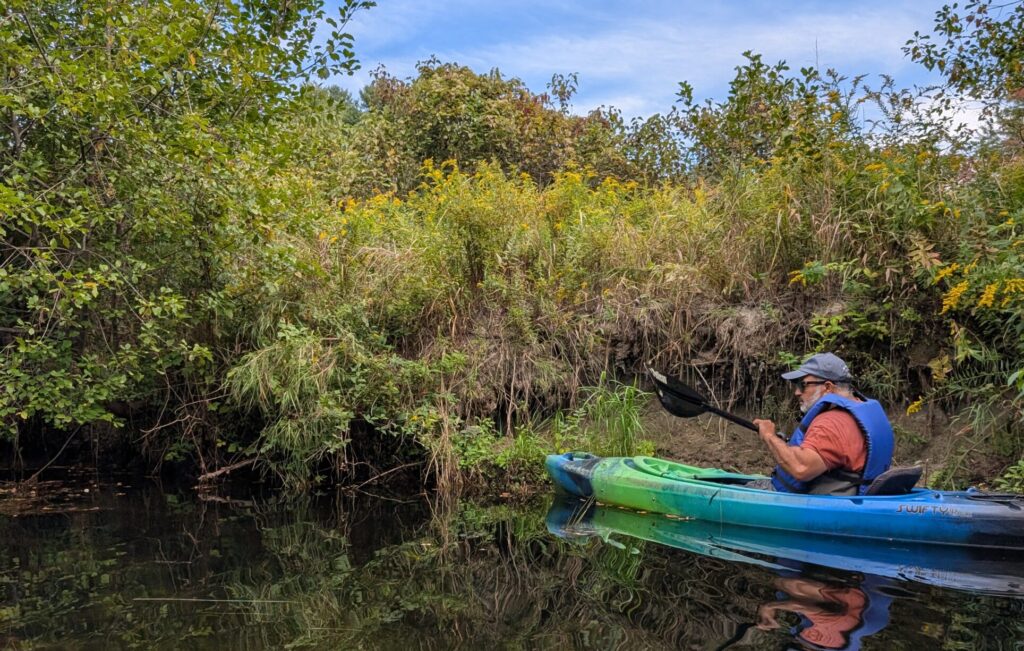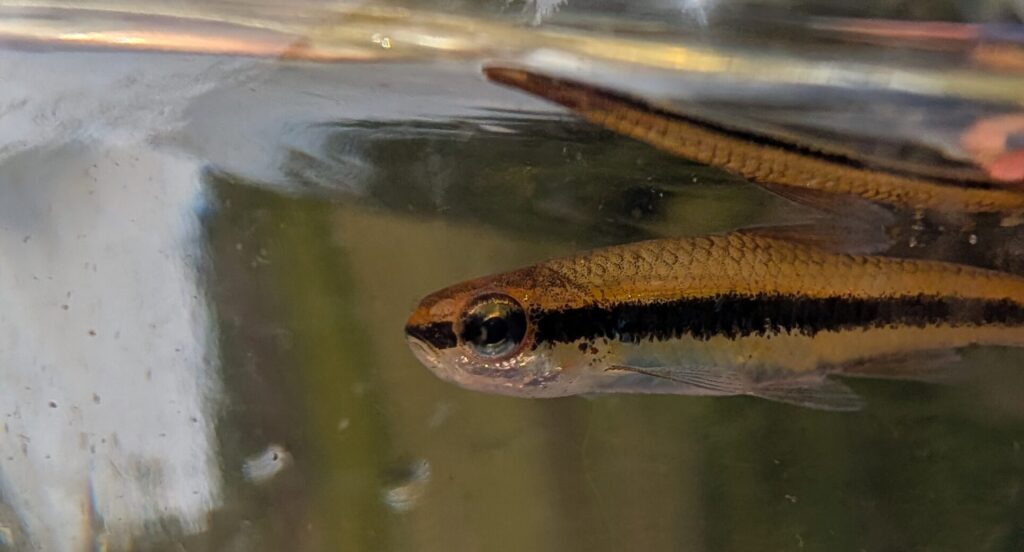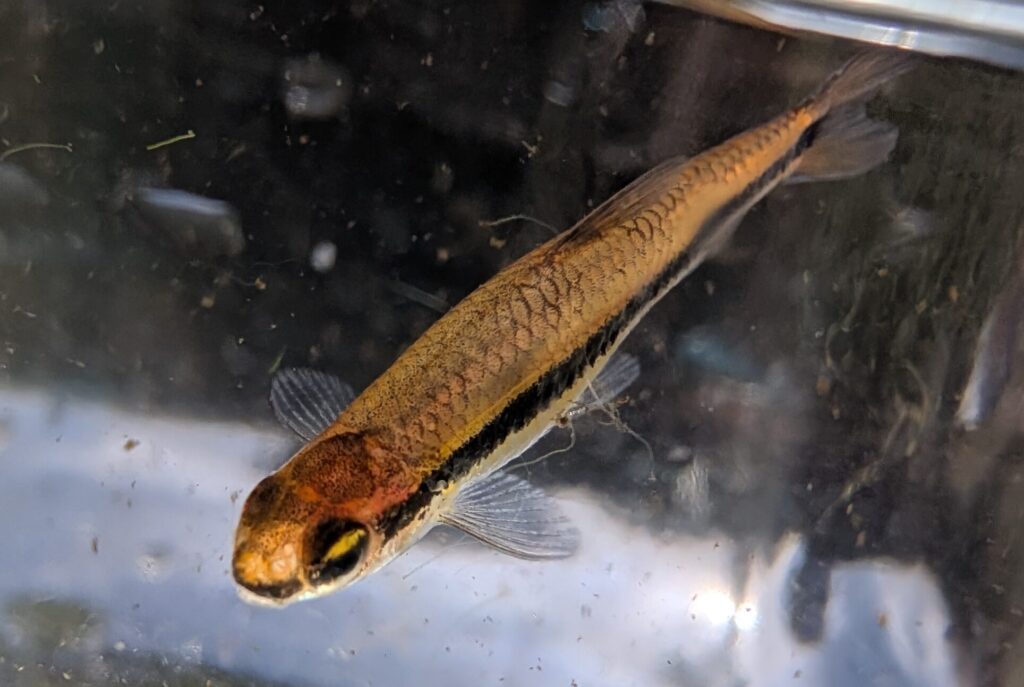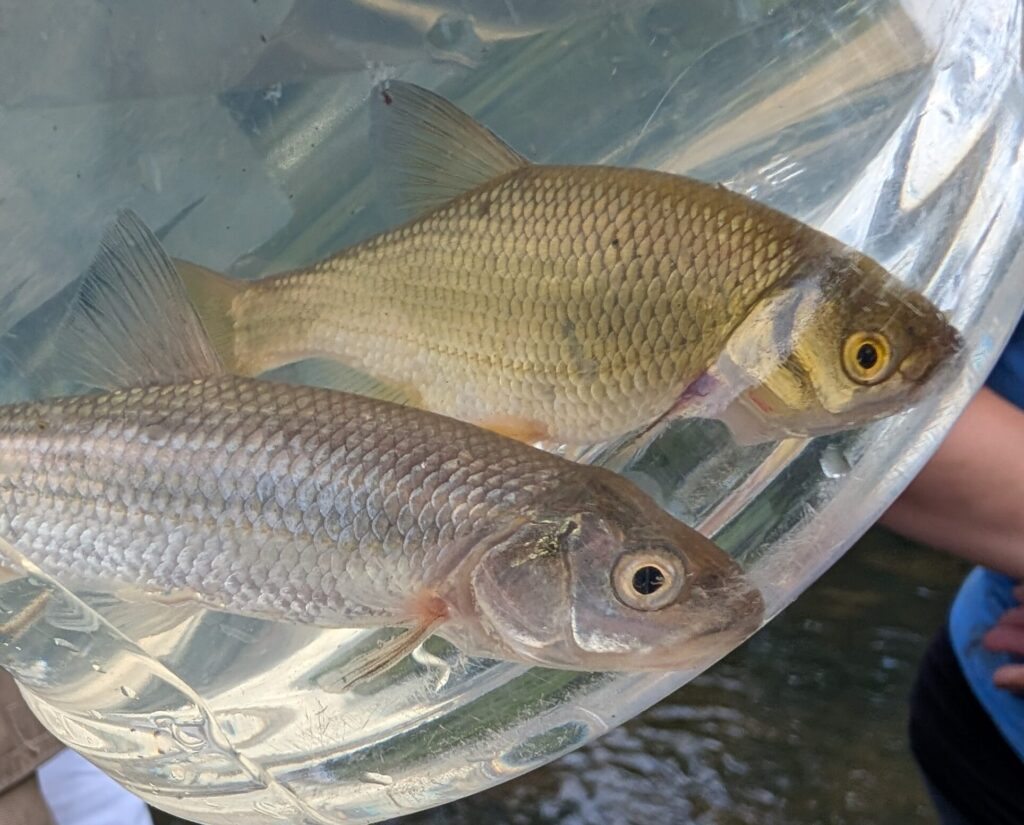
Last year, we shared in our blog that we’d be partnering with New Hampshire state biologists to identify potential survey sites for the bridle shiner, a species of conservation concern in NH and across much of its range. This September, we followed through on that plan by conducting surveys at two locations within the Merrimack watershed.
During our fieldwork in southern New Hampshire, we documented ten fish species in total, including bridle shiner! Even more exciting, we observed several schools of bridle shiner across three distinct sections of our survey route. These findings may represent some of the westernmost records of the species in New Hampshire.
To learn more about the bridle shiner and other fish species found in New Hampshire, visit: Bridle Shiner – NH Fish Species

While seining, we consistently noted that locations where bridle shiner were present had an abundance of vegetation. This observation aligns with the species’ known preference for dense patches of submerged aquatic vegetation. Notably, these were the only areas where we documented bridle shiners.
The vegetation in these habitats primarily consisted of aquatic pondweed species and various sedge species along the riverbanks or in small coves adjacent to the mainstem of the river. Documenting not only the fish species but also key habitat characteristics, such as water depth and vegetative structure, is essential for understanding habitat use. This information can guide future survey efforts and support conservation strategies aimed at preserving these critical habitats.

During our survey efforts in Massachusetts this year, we were unable to document any bridle shiners in the Shawsheen River watershed, despite sampling at several new locations. This small and isolated population is surrounded by extensive urban development, which may be contributing to habitat challenges. Compared to the areas in southern New Hampshire where we successfully observed bridle shiners, the Shawsheen River and nearby brooks appear to have higher turbidity levels. This is significant, as bridle shiners prefer clear water that allows for good visibility while hunting aquatic invertebrates, their primary food source.

We’d like to extend our sincere thanks to Deborah Toupouzis and Jillian Perkins, zoo staff who joined our team to assist in conducting the Shawsheen River surveys. During these efforts, we documented seven fish species, including some notable captures of fallfish and white sucker, species we’ve only recorded a handful of times in previous surveys of the Shawsheen.
Looking ahead, we plan to continue surveying new sites in southern New Hampshire and northeastern Massachusetts to support our state partners and deepen our understanding of this fascinating species and the broader diversity of fish in our local waterways.
